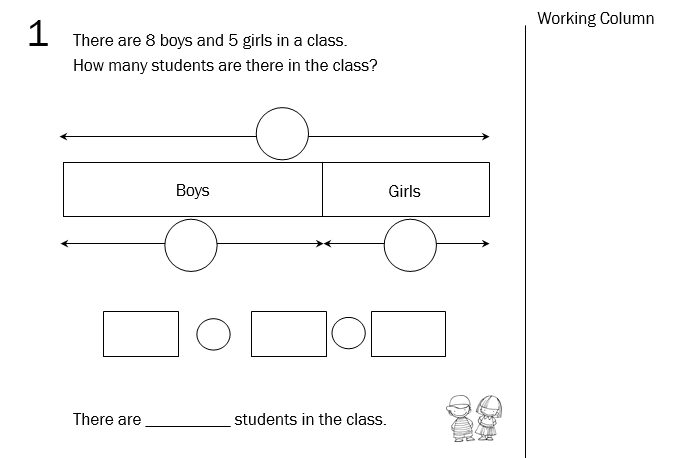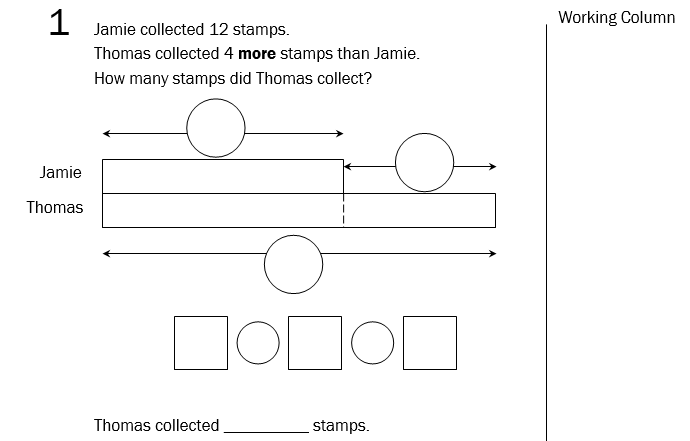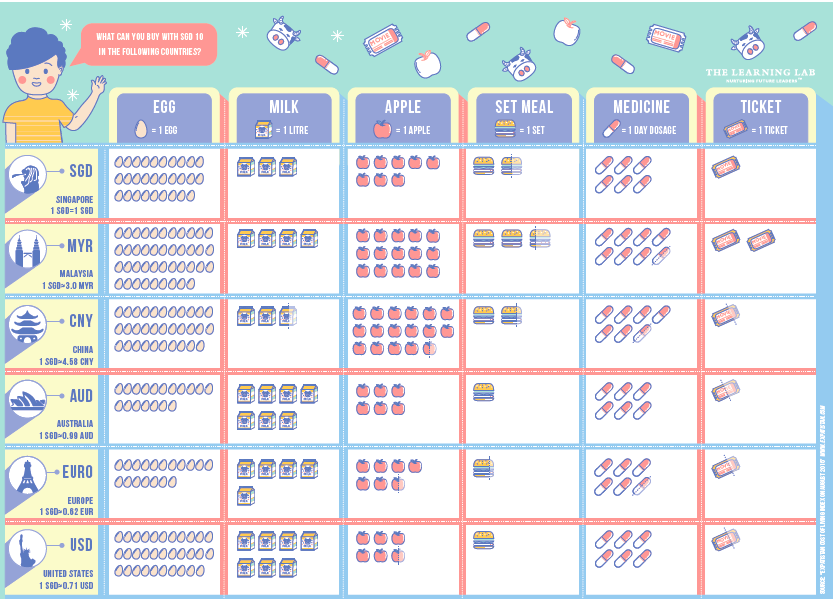We understand your frustration – Maths problem sums can be very challenging, especially for our young ones in Primary 1 and 2.
In comes the requirement of applying heuristics, most commonly represented as a bar graph to solve the problem.
In Primary 1 Math, word problems do not just contain the basic addition and subtraction concepts. A simple part-whole or comparison model will be needed to easily solve the problem.
Let's take a look at one such example below:

A template is given and a student just needs to fill in the blanks by adding the numbers together to find a total.

Simple enough, right?
Welcome to Primary 2, where not only do our little ones need to recall their Primary 1 topics, but also grapple with new concepts like multiplication and division, and these new model drawing concepts:
Internal Transfer
Example
There is a total of 8 chickens and dogs.
The animals have a total of 22 legs.
How many dogs are there?
| No. of dogs | No. of legs the dogs have |
No. of chickens |
No. of legs the chickens have |
Total no. of legs | |
| 4 | 4 x 4 = 16 | 4 | 4 x 2 = 8 | 16 + 8 = 24 | x |
| 3 | 3 x 4 = 12 | 5 | 5 x 2 =10 | 12 + 10 = 22 | 🗸 |
There are 3 dogs.
Notice anything missing? That’s right, on top of new topics, Primary 2 students would now need to draw their own models!
Given that most of us have placed Maths problem sum solving days behind us, here are good habits your child should have when tackling word problems.
Make it a habit for your child to arm him or herself with a highlighter to mark out important key phrases or words in the question. These key words help to streamline their thoughts so that they will remember which concept this is, and which model to draw.
Consider this trick question.
Mandy has $30 marbles. She has $5 more than Henry..
How much money does Henry have?
Highlighting the key phrase “more than” might imply that you should simply add the numbers together.

As seen in the model, it is always good to label the entity who has fewer items, and the entity who has more. As such, in order to find the entity ‘who has a fewer amount of money’ (Henry), we should subtract instead of adding the numbers.
By labelling all parts of the model, it will not only help to minimise careless mistakes, but it also shows that he or she understands the question fully!
Our teachers stress the importance of this habit every lesson. By doing so, it allows for your child to go over the steps they took to derive the answer, so that they will be able to quickly identify and correct the error, if any.

At TLL, we like to push the boundaries of how Math is taught and also show how Math can be applied in real - world situations.
Sure, Math can be a “scary” subject to some students as they get older, due to the lack of proper foundation. We want to make the introduction of these topics fun and interesting for the lower primary levels so that our students will become interested, and maybe even grow to love (not fear!) the subject!
Specially designed card games such as Tally Tower trains our Primary 1 and 2 students’ mental calculation abilities on addition and subtraction of numbers up to the hundreds!

In this infographic, it illustrates how many items a boy can purchase with SGD 10, compared to five other countries!

Our younger ones love how the colourful infographics make real world applications of a certain topics, such as Money and Graphs, easier to understand!
Plus (pun intended), our students will discuss simple concepts like exchange rates and topics like purchasing power of different currencies in classes.
After all, isn’t playing a fun game, or talking to your friends about how your Math topic relates to the world around you a much more exciting way to learn?
Take a behind-the-scenes look at how our curriculum teams get inspired to update our materials weekly.
Find out more about our Maths programmes here.
The Learning Lab is now at 8 locations. Find a location that suits your needs.
If you have any questions about our programmes, please email us at enquiry@thelearninglab.com.sg or call us at 6733 8711 and we will be happy to assist you.
To stay ahead, plan ahead. Find out more about our Maths programmes here.
The Learning Lab is now at 8 locations. Find a location that suits your needs. If you have any questions about our programmes, please email us at enquiry@thelearninglab.com.sg or call us at 6733 8711 and we will be happy to assist you.